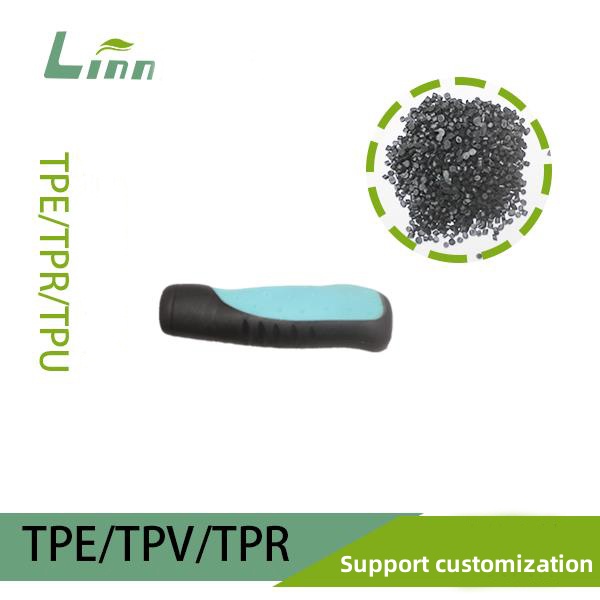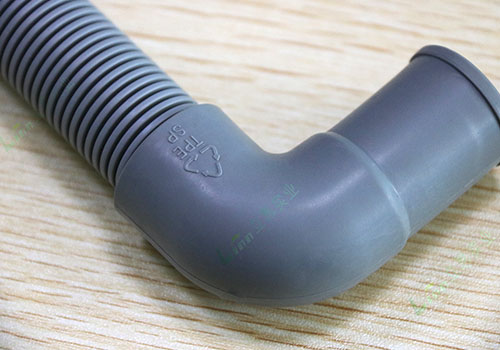As someone who’s spent years working with thermoplastic elastomers (TPE) in various industries, I’ve often been asked a question that seems simple but is critical for many users: Will TPE products mold, and how can we test for it? Mold growth on materials can be a dealbreaker, especially in applications like medical devices, food packaging, or outdoor equipment where hygiene and durability are non-negotiable. If you’re wondering whether your TPE products are prone to mold and how to verify their resistance, you’re in the right place.
In this article, I’ll walk you through why mold growth is a concern for TPE, the factors that influence it, and, most importantly, how to test TPE products for mold resistance. I’ll share practical methods, industry-standard tests, and tips to ensure your TPE products stay mold-free, even in challenging environments. Let’s dive in with a clear goal: to equip you with the knowledge to keep your TPE products safe and reliable.

Why Worry About Mold on TPE Products?
TPE, known for its rubber-like elasticity and plastic-like processability, is a versatile material used in everything from medical tubing to consumer goods like phone cases. However, in humid or warm environments, some users notice mold spots or a musty smell on TPE products, raising concerns about safety, aesthetics, and longevity. Mold not only compromises the product’s appearance but can also pose health risks in sensitive applications, like food contact surfaces or medical equipment.
The good news? TPE itself isn’t inherently a breeding ground for mold, but certain conditions and formulations can make it susceptible. Understanding how to test for mold resistance is key to ensuring your TPE products perform well in real-world conditions. Let’s start by exploring why mold might grow on TPE and then move into actionable testing methods.
Understanding Mold Growth on TPE
Mold is a type of fungus that thrives in environments with moisture, warmth, and organic nutrients. While TPE is a synthetic polymer and not a natural food source for mold, several factors can make it vulnerable:
Surface Contamination
TPE products can accumulate dust, oils, or organic residues during use or storage. These contaminants provide nutrients for mold, allowing it to grow on the surface, even if the TPE itself isn’t directly consumed.
Porous or Textured Surfaces
Some TPE products have rough or porous surfaces, which can trap moisture and debris, creating microenvironments where mold can flourish.
Environmental Conditions
High humidity (above 60%), warm temperatures (20°C–30°C), and poor ventilation are ideal for mold growth. TPE products stored in damp basements or used in tropical climates are particularly at risk.
Formulation Additives
Certain TPE formulations include additives like plasticizers, fillers, or processing aids. If these additives are organic or biodegradable, they may inadvertently support mold growth under the right conditions.
Lack of Antimicrobial Additives
Unlike some materials designed with built-in antimicrobial properties, standard TPE formulations may not resist mold unless specifically treated.
By understanding these factors, we can design tests that simulate real-world conditions and reveal whether a TPE product is prone to mold. Let’s explore how to do this effectively.

Methods to Test TPE Products for Mold Resistance
Testing TPE products for mold resistance involves replicating the conditions that promote mold growth and observing how the material responds. Below, I’ve outlined several methods, ranging from simple DIY tests to industry-standard protocols, so you can choose the one that fits your needs.
1. Visual Inspection in Real-World Conditions
The simplest way to test for mold is to expose TPE products to a naturally mold-prone environment, like a humid bathroom or a damp storage room, for a few weeks. Check for visible mold spots, discoloration, or odors. While this method is easy, it’s not controlled and may take longer to yield results.
Steps:
Place TPE samples in a humid, warm environment (e.g., 25°C, 80% humidity).
Inspect weekly for mold growth using a magnifying glass.
Note any changes in appearance, texture, or smell.
Pros: Low-cost, no special equipment needed.
Cons: Slow, inconsistent results due to uncontrolled conditions.
2. Controlled Humidity Chamber Test
For more reliable results, use a humidity chamber to simulate mold-friendly conditions. This method is common in quality control labs and allows precise control over temperature and humidity.
Steps:
Place TPE samples in a chamber set to 25°C–30°C and 85%–90% relative humidity.
Introduce a common mold strain, like Aspergillus niger, to the samples (optional for advanced testing).
Monitor for mold growth over 14–28 days, using visual inspection or microscopy.
Clean samples afterward to assess whether mold can be removed or if it has penetrated the material.
Pros: Controlled, repeatable results.
Cons: Requires specialized equipment.
3. ASTM G21 Standard Test
The ASTM G21 test, developed by the American Society for Testing and Materials, is an industry-standard method for evaluating fungal resistance in polymers. It’s widely used to certify TPE products for mold resistance.
Steps:
Prepare TPE samples (typically 50 mm x 50 mm).
Inoculate the surface with a mixture of mold spores (e.g., Aspergillus niger, Penicillium funiculosum).
Incubate samples at 28°C and ≥85% humidity for 28 days.
Rate mold growth on a scale of 0–4 (0 = no growth, 4 = heavy growth).
Rating Scale:
| Rating | Description |
|---|---|
| 0 | No mold growth |
| 1 | Trace growth (<10% coverage) |
| 2 | Light growth (10%–30%) |
| 3 | Moderate growth (30%–60%) |
| 4 | Heavy growth (>60%) |
Pros: Standardized, widely accepted results.
Cons: Requires a certified lab and technical expertise.

4. Nutrient Agar Test
This method tests whether TPE surfaces support mold growth by exposing them to a nutrient-rich environment.
Steps:
Place TPE samples on a nutrient agar plate (a gel medium that supports mold growth).
Sprinkle mold spores or a small amount of contaminated soil on the samples.
Incubate at 25°C–30°C for 7–14 days.
Check for mold colonies on the TPE surface versus the agar.
Pros: Simple, can be done with basic lab equipment.
Cons: Less precise than ASTM G21, as it doesn’t simulate real-world conditions.
5. Accelerated Aging with UV and Moisture
Mold resistance can degrade over time due to material aging. Combining UV exposure and moisture tests can reveal how TPE holds up long-term.
Steps:
Expose TPE samples to UV light and cycles of high humidity in an accelerated weathering chamber.
After 100–200 hours, test for mold growth using the ASTM G21 method or visual inspection.
Compare results to unaged samples to assess degradation.
Pros: Simulates long-term environmental stress.
Cons: Expensive equipment and longer testing time.
Factors That Influence Test Results
To ensure accurate testing, consider these factors that can affect outcomes:
| Factor | Impact on Testing | Recommendation |
|---|---|---|
| Sample Preparation | Dirty or contaminated samples may skew results. | Clean samples with isopropyl alcohol before testing. |
| Mold Strains | Different molds have varying growth rates. | Use standard strains like Aspergillus niger for consistency. |
| Test Duration | Short tests may miss slow-growing mold. | Run tests for at least 14–28 days. |
| Environmental Control | Inconsistent humidity or temperature affects growth. | Use calibrated chambers for precise conditions. |
| Additives in TPE | Antimicrobial additives may suppress mold. | Check formulation details with the supplier. |
By controlling these variables, you can trust that your test results reflect the TPE’s true mold resistance.
Practical Tips to Prevent Mold on TPE Products
Testing is only half the battle—preventing mold is just as important. Here are my top recommendations based on real-world experience:
Choose Mold-Resistant Formulations
Some TPE products are formulated with antimicrobial additives or low-nutrient fillers to deter mold growth. Ask your supplier for TPE grades certified for mold resistance, especially for high-humidity applications.
Keep Products Clean and Dry
Regularly clean TPE products with mild detergents or alcohol wipes to remove dust and organic residues. Store them in dry, well-ventilated areas to minimize moisture buildup.
Control Storage Conditions
Store TPE products in environments with humidity below 60% and temperatures below 25°C. Use dehumidifiers or silica gel packs in storage areas prone to dampness.
Apply Protective Coatings
For critical applications, consider applying a mold-resistant coating to TPE surfaces. These coatings create a barrier against moisture and contaminants.
Monitor Usage Environments
If TPE products are used in humid or outdoor settings, inspect them regularly for early signs of mold. Early intervention can prevent widespread growth.

Real-Life Example: A Lesson Learned
A couple of years ago, I worked with a client who manufactured TPE grips for outdoor fitness equipment. They noticed mold spots on the grips after a rainy season in a tropical region. The client was concerned about customer complaints and potential health risks.
We conducted an ASTM G21 test on their TPE samples and found moderate mold growth (Rating 3) after 28 days. The issue stemmed from the TPE’s slightly porous surface, which trapped moisture and debris. To solve this, we recommended switching to a smoother TPE formulation with an antimicrobial additive and advised the client to coat the grips with a water-repellent sealant. After implementing these changes, follow-up tests showed no mold growth (Rating 0), and the client reported no further issues.
This experience taught me that combining proper material selection, testing, and preventive measures is the key to mold-free TPE products.
Comparing TPE to Other Materials for Mold Resistance
To put TPE’s mold resistance in context, here’s how it stacks up against other common materials:
| Material | Mold Resistance | Key Factors | Applications |
|---|---|---|---|
| TPE | Moderate to Good | Depends on formulation; additives improve resistance. | Medical, food, consumer goods |
| Silicone | Excellent | Non-porous, inherently resistant. | Medical, food, high-hygiene uses |
| PVC | Poor to Moderate | Plasticizers can support mold growth. | General piping, low-cost uses |
| Polyurethane | Good | Smooth surfaces reduce mold adhesion. | Industrial, outdoor equipment |
Note: Performance varies by formulation and environmental conditions.
Silicone is the gold standard for mold resistance, but TPE can perform well with the right additives and maintenance, making it a cost-effective alternative.
Frequently Asked Questions
To wrap up, here are answers to common questions about testing and preventing mold on TPE products:
Q1: Can mold grow inside TPE, or is it just on the surface?
A: Mold typically grows on the surface, feeding on contaminants like dust or oils. TPE itself isn’t a nutrient source, so mold won’t penetrate unless the material is degraded or porous.
Q2: How often should I test TPE products for mold resistance?
A: Test during product development and whenever you change formulations or suppliers. For ongoing use, inspect products regularly in high-humidity environments.
Q3: Are there DIY ways to make TPE more mold-resistant?
A: Yes! Clean products regularly, store them in dry conditions, and consider applying a mold-resistant spray or coating for added protection.
Q4: What if my TPE product already has mold?
A: Clean it with a 1:10 bleach-water solution or isopropyl alcohol, then dry thoroughly. If mold persists or the material is damaged, replace the product.

Wrapping Up: Keeping TPE Mold-Free
Testing whether TPE elastomer products will mold is about understanding the material, the environment, and the right testing methods. Whether you’re using a simple humidity test or the rigorous ASTM G21 protocol, the goal is to ensure your TPE products can withstand mold-prone conditions. Combine testing with preventive measures like proper storage, cleaning, and mold-resistant formulations, and you’ll have TPE products that stay clean and reliable, no matter the environment.
I’ve seen firsthand how the right approach can make all the difference in keeping TPE products mold-free. If you’re facing mold issues or need advice on testing or material selection, drop a comment—I’d love to help you find the perfect solution!
References:




